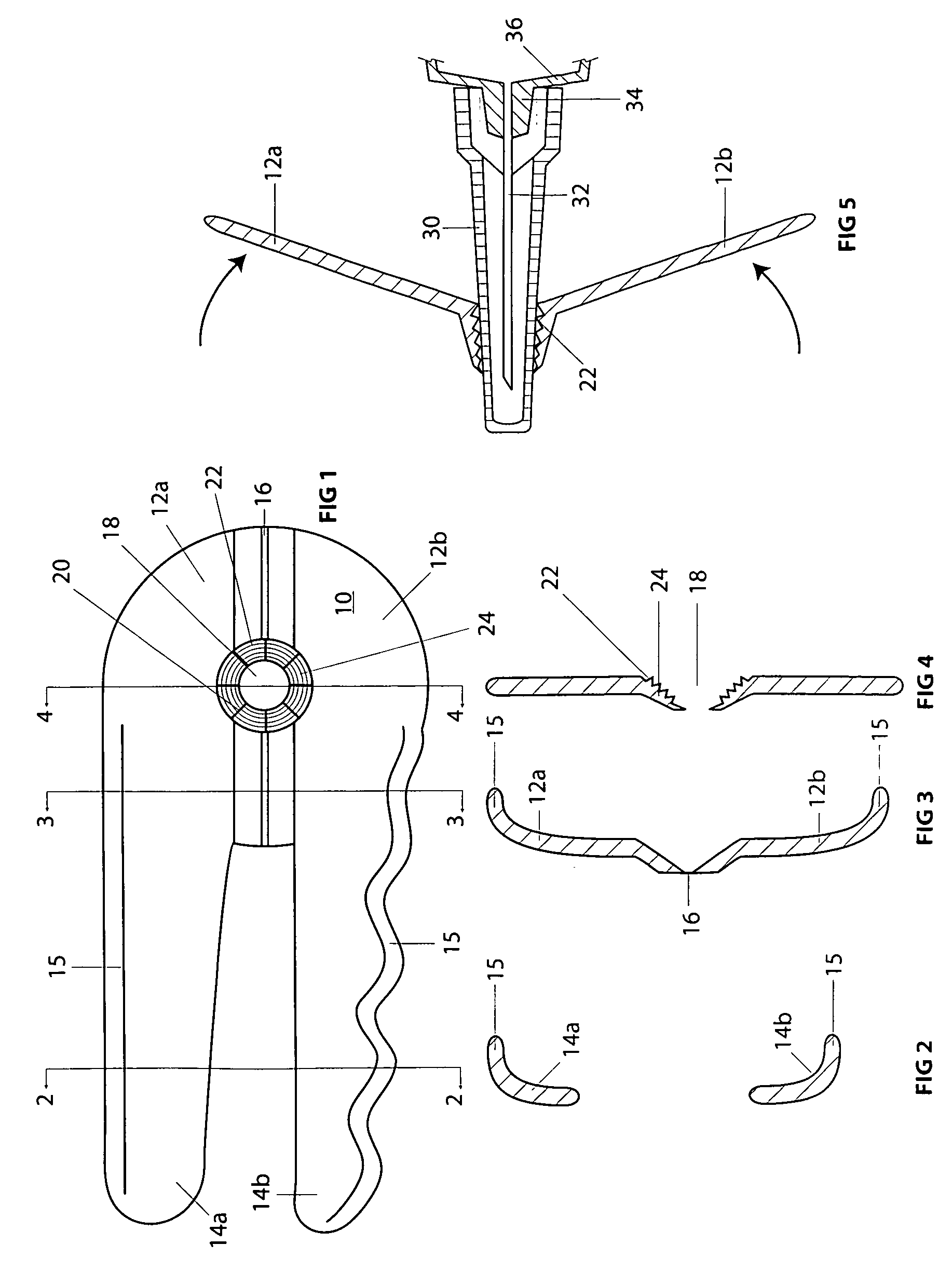Portable needle uncapping and recapping device
a needle cap and portability technology, applied in the field of medical devices, can solve the problems of accidental needle puncture injuries, needlestick injuries, and high cost, and achieve the effects of reducing the aperture size, facilitating the uncapping of the needle, and increasing the clamping force on the needle cap
- Summary
- Abstract
- Description
- Claims
- Application Information
AI Technical Summary
Benefits of technology
Problems solved by technology
Method used
Image
Examples
Embodiment Construction
[0024] Other than in the reference to specific prior art, throughout this disclosure, including the claims, the term needle shall be deemed to include any sharp object, including, without limitation, not just medical and dental needles, but also intravenous catheters, phlebotomy sets, spinal, epidural and biopsy needles and trocars. Similarly, the term needle cap shall include the caps and sheaths for all such sharp or pointed devices.
[0025] Referring now to FIG. 1, it can be seen that a portable needle uncapper and recapper according to the invention is designated by the numeral 10. The device 10 comprises two discoid upper and lower semicircular halves 12a and 12b joined together by a horizontal living hinge 16. Emanating from the same side of each of the upper 12a and lower 12b halves are two lateral handles 14a and 14b. When squeezed in the hand, the handles bring the two discoid halves toward each other, flexing along the living hinge 16, in a manner similar to partially closi...
PUM
 Login to View More
Login to View More Abstract
Description
Claims
Application Information
 Login to View More
Login to View More - R&D
- Intellectual Property
- Life Sciences
- Materials
- Tech Scout
- Unparalleled Data Quality
- Higher Quality Content
- 60% Fewer Hallucinations
Browse by: Latest US Patents, China's latest patents, Technical Efficacy Thesaurus, Application Domain, Technology Topic, Popular Technical Reports.
© 2025 PatSnap. All rights reserved.Legal|Privacy policy|Modern Slavery Act Transparency Statement|Sitemap|About US| Contact US: help@patsnap.com


